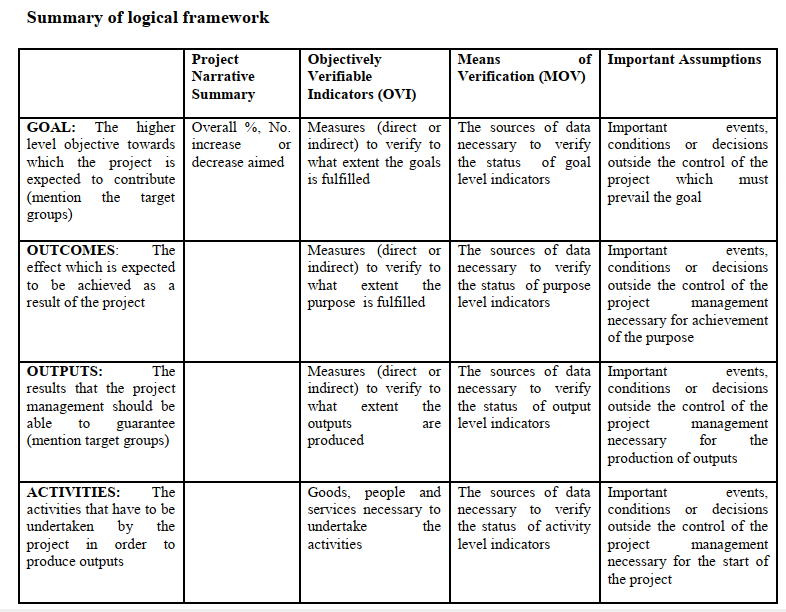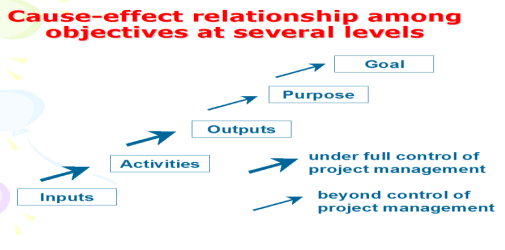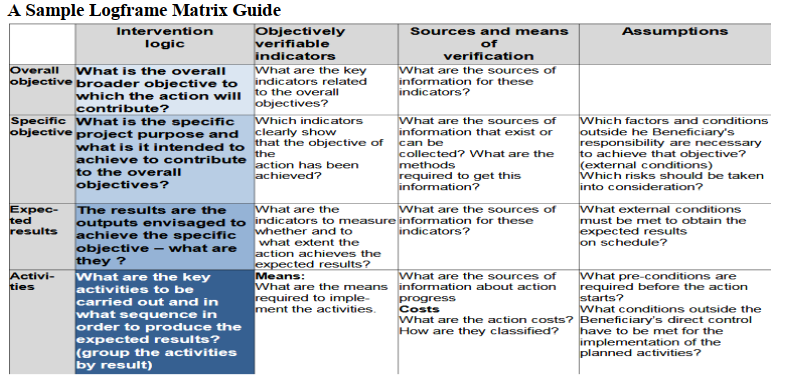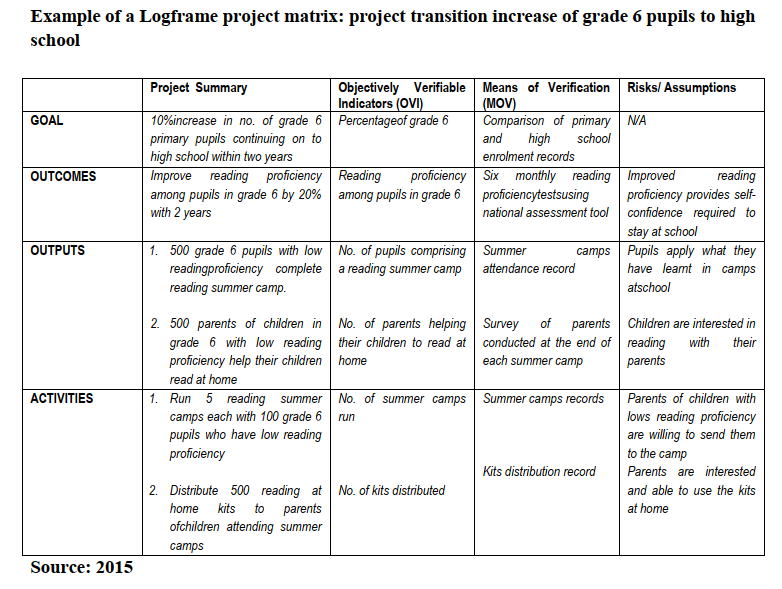Log frame originated from planning used by US military and was later used by USAID in 1960s for development projects; it is a4x4 table with 16 cells. It is a Management tool used to identify strategic elements of a programme or project (objective, expected accomplishments, indicators of achievement, outputs and inputs) and their causal relationships, indicators and the assumptions or risks that may influence success and failure. It facilitates planning, implementation, monitoring and evaluation of a development intervention in a programme or project. A distinction is usefully made between what is known as the Logical Framework Approach (LFA) and the Logical Framework Matrix.
Logical Framework Approach (LFA)
This is a tool – or even an open set of tools – for project design and management. The approach involves problem analysis, stakeholder analysis, developing a hierarchy of objectives and selecting a preferred implementation strategy. The product of this analytical approach is the matrix (the Log frame), which summaries what the project intends to do and how, what the key assumptions are, and how outputs, outcomes and impacts will be monitored and evaluated
Logical Framework Matrix
The Log frame Matrix is a participatory Planning, Monitoring & Evaluation tool whose power depends on the degree to which it incorporates the full range of views of intended beneficiaries and others who have a stake in the programme design. It is a tool for summarizing the key features of a programme and is best used to help programme designers and stakeholders;
Summary of logical framework
Objectively Verifiable Indicators(OVI)
These are measures direct or indirect that will verify to what extent the objectives have been fulfilled. How you will measure the achievements. OVI Indicators;
- must be valid, reliable, precise, cost-effective and stated independently from other levels.
- should make clear how the target group will benefit from the realization of outputs.
- should be specific in terms of:Quality (what?), Quantity (how much?), Time (when, how long?), Target Group (who?) and Place (where?)
The process of defining indicators forces us to clarify our objectives. A good indicator is:
- Plausible – measuring what is important in the project
- Attributable – measuring changes caused by the project
- Cost-effective – involving data that may be collected and analyzed inexpensively
- Independent – not inherent to the project
- Verifiable – to reach agreement
Means of Verification(MOV)
These are pieces of information which show the standard set by indicators has been reached. How will you collect information for the indicators? For some objectives and indicators, however, there may be no current information available.It’s important to determine what information will be needed at the onset of project. When determining MOV,it’s important to; make useof existing information; keep information requirements simple and relevant; consider how information will be analysed, what resources will be required to process it, and how it will be presented.
Goal – is the overall aim
Outcome or purpose – is what will be achieved who will benefit and by when
Output – is the specific results the project will generate
Activities– are what tasks need to be done in order for the output to be achieved
Risks or Assumptions– are external conditions needed to get results.
A Sample Logframe Matrix Guide
Benefits of Logframe approach
- improves project design,
- encourages project performance,
- facilitates project management,
- Achieves a structured project design process characterized by a logical sequence, interlinking the individual steps in the design process.
- Bring about the participation of the stakeholders involved in the project design and management
Example of a Logframe project matrix: project transition increase of grade 6 pupils to high school





The information provided are beneficial and easy to understand. I suggest humanitarian aid workers and sustainable development professionals review it.